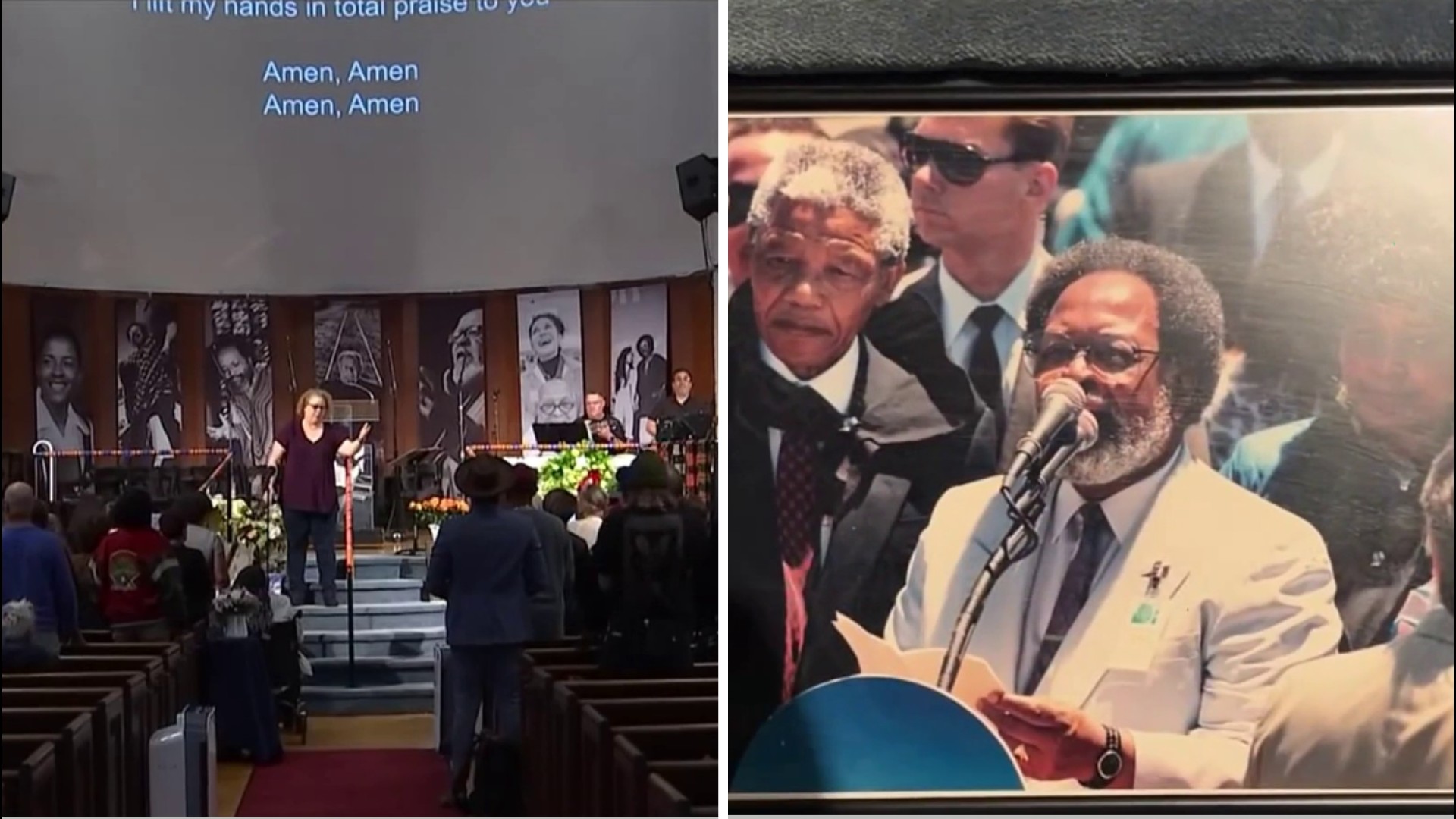An NBC Bay Area investigation raises questions about the deaths of two men who were given Midazolam, a common sedative San Francisco medics now use on as many as 2,000 agitated patients a year.
“Let me go!” Carlos Margo, 40, screamed outside San Francisco Jail back on April 3, 2015, where he had been taken on an outstanding traffic warrant.
His voice can be heard clearly over the dispatch radio recording reviewed by NBC Bay Area’s Investigative Unit.
Two hours earlier, he seemed calm when officers were called to a report of him trespassing on a Bayview balcony.
But once at the Seventh Street jail, officials ordered him taken to the psychiatric ward of San Francisco General because of his increasingly erratic behavior and talk of suicide.
As he was taken out of the booking area, and then again outside awaiting an ambulance, Benson began resisting.
After resisting off and on for 25 minutes, he finally appeared to have calmed and was in restraints. That’s when a medic with American Medical Response gave him a 5 mg shot of Midazolam – a “chemical restraint” drug the city began using in 2014. Crews now inject it between 1,000 and 2,000 times a year to slow breathing and calm agitated suspects.
Local
On the way to the hospital, medics could not find a pulse. Benson died three days later. He was 40.
Darnell Benson’s brother, Derrick, told us he’s always suspected Midazolam was to blame – even though the medical examiner’s report concluded Darnell’s death was due to cocaine and methamphetamine intoxication.
“They claimed intoxication, methamphetamine, they claimed obesity, they claimed marijuana,” he said. “They claimed all of these things. But, in reality, the chemical shot…was the killer to me.”
An NBC Bay Area review of medical records and a District Attorney’s office review of his death, show Benson was already calm and restrained when medics gave him a 5 milligram dose.
That amounted to twice the 2.5 mg dose specified for use on agitated patients under the city’s policy at the time.
Even so, Peter Green, a retired 20-year veteran San Francisco paramedic, says 5 mg should have been a safe dose.
“It’s more humane than say, physically restraining somebody,” he said. “It can also protect them, their cardiac functions from straining…but again, it needs to be done in a safe manner.”
The key, Green says, is following the city protocol that mandates patients be constantly electronically monitored to make sure their breathing doesn’t slow dangerously. Green says that is not the only danger that requires monitoring.
“If the patients have been using street drugs such as methamphetamine, they may be dehydrated because they are not drinking and eating,” he said. “They may have a low blood pressure -- if you give midazolam to somebody with a low blood pressure you can precipitate a cardiac arrest.”
NBC Bay Area’s review of Benson’s medical records shows that while medics did check his pulse, they did not start electronic monitoring until after his breathing had slowed dramatically in the ambulance.
The Office of the Chief Medical Examiner did not respond to questions about what role Midazolam may have played in the Benson case.
Then, in March of last year, another death of a sedated suspect. What happened to Carlos Margo, also known as Abel Florentino, confirmed Derrick Benson’s worst fears.
“After Carlos died the same way, it substantiates 100 percent that the chemical restraint is what killed them.”
Margo had smashed glassware, cutting himself, inside the now defunct Hecho Cantina at 2200 Market Street when officers arrived on the night of March 11. Patrons had held him down, but he continued to resist and scream as officers took over and sought to detain him. That lasted for several minutes before he finally appearing calm – so much so that officers had to check to make sure he was still breathing. At 8:41, a medic injected a 5 mg dose – now allowed under revised rules – in his left arm.
Two minutes later, as officers lay Margo down on a backboard, one of the officers could not find a pulse. He was revived but died 13 days later, at the age of 36.
Autopsies showed both men suffered anoxic brain injury, which is caused when the brain is deprived of oxygen.
That is something that can happen, according to the Midazolam product warning label, without “continuous monitoring of respiratory and cardiac function.”
A review of medical examiner records shows the medical examiner who did the autopsy report first concluded that Midazolam likely did play a role along with methamphetamine in Margo’s death. But the case was reopened in light of unspecified video evidence. The new conclusion was he died of “methamphetamine toxicity under law enforcement restraint.”
No one at the office of the chief medical examiner responded to our request for comment and questions related to its Margo findings. The Department of Public Health, which oversees critical care in the city, told us that both cases were “comprehensively investigated.”
But spokesman Andrew Brent declined to release the findings, citing patient confidentiality.
“It is very rare to have an adverse outcome” with Midazolam, Brent said in a statement, “and we take those cases very seriously.”
The city, he said, is now seeking to deploy new technology and improve tracking of patients given Midazolam and morphine.
But Green, who advises private medic services and reviewed the available records of both cases, told us the two deaths show medics are not even using the monitoring equipment they already have.
“It’s actually basic monitoring that’s done every day,” Green explained. “It’s not high tech, it’s not hard to do. It’s basic monitoring that should have been done.”



